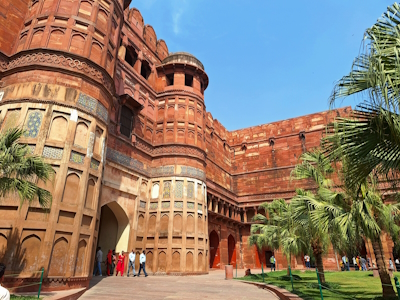Grand Trunk Road sites

Sites along the Uttarapath, Badshahi Sadak, Sadak-e-Azam, Grand Trunk Road is part of the Tentative list of India in order to qualify for inclusion in the World Heritage List.
The Sites along the Grand Trunk Road represent a British colonial road system connecting Afghanistan, Pakistan, India and Bangladesh. Parts of this cultural and trade route already existed in earlier periods, from the 4rd century BC on, hence the three other names for it. The propsoal includes 93 locations.
Map of Grand Trunk Road sites
Load mapThe coordinates shown for all tentative sites were produced as a community effort. They are not official and may change on inscription.
Community Reviews
Els Slots

I am going to highjack this Indian TWHS to share something related to the wider Grand Trunk Road. After all, the Grand Trunk Road reached from the east of Bangladesh to Kabul, connecting the Indian subcontinent with Central Asia. This trajectory now crosses the countries of Afghanistan, Pakistan, India and Bangladesh.
The town of Attari is one of the serial components proposed by India; this is the border town with Pakistan and the venue of the daily Wagah-Attari border ceremony. While travelling through Pakistan, I managed to watch this ceremony from the Pakistani side. Attending it from either side is a travel bucket list thing and it even exceeded my high expectations.
So, since 1959 India and Pakistan have lowered their flags in a joint effort to mark the daily closure of this border crossing on the Grand Trunk Road. It lies only about 30km from Lahore and makes for a fine half-day trip from there. It’s probably better set up to receive tourists than anything else in Pakistan: there are a café, snack vendors and toilets next to the parking lot where you have to wait til about 30 minutes before the ceremony starts. My phone thought I’d crossed the border already and pinged “Welcome to India. The rates are…”.
Once the guards lift the barrier, you may walk to the actual border. Along the way Pakistani flags are sold and ‘make-up artists’ are available to paint your face in green and white. Banners show the strength of the Pakistani military and its fallen soldiers. The border line is surrounded by 2 halves of football stadium-like stands: a huge one on the Indian side and a more modest one on the Pakistani side. I guess there were about 500 Pakistani visitors and 3,000-5,000 Indians. Overall it felt much like the lead-up to watching an important football match between two rivalling sides.
The pre-show on the Pakistani side is limited to one drummer and one animator, who try to make the Pakistani cheer as hard as they can and yell “Pakistan – Zamindat!” (Long live Pakistan) and “Allahu Akbar”. The Indians probably couldn’t hear us (we hardly heard anything from their side either) because both sides continuously blasted nationalistic songs from the loudspeakers. On the Indian side, they have a bit more of a show, with dancers. The Pakistani border guards, selected to be tall and sporting mustaches, are available to take photos with before and after the show.
We had VIP-seats, but still it was necessary to find a seat as close as possible to the actual border line as that’s where all the interaction takes place. People were still arriving at their seats well into the ceremony, sometimes obstructing the views. I brought my superzoom camera and that was necessary as well.
You shouldn’t focus too much on taking photos, however, as it all goes by so quickly and a lot goes on simultaneously. The closing-the-border ceremony nowadays starts with two female guards from either side marching to the borderline. The soldiers then go through a whole ritual of steps, ending with the commanders shaking hands. The funniest part I found was the one with the rope: before lowering both flags, they have to unwind the rope from the pole – they kind of do a race to see which side gets it loose first.
Despite the poor relations between these two countries, they have continued this tradition which is a hugely coordinated act that to me speaks more about their brotherhood than anything else.
Read more from Els Slots here.
Community Likes
Site Info
- Full Name
- Sites along the Uttarapath, Badshahi Sadak, Sadak-e-Azam, Grand Trunk Road
- Country
- India
- Added
- 2015
- Type
- Cultural
- Categories
- Human activity - Transport and Trade
- Link
- By ID
Site History
2015 Revision
Includes former TWHS Sites along the Badshahi Marg - The Grand Trunk Road (2014)
2015 Revision
Includes former TWHS Akbar's Tomb, Sikandara (1985-1994) and its predecessor Sikandra - Akbar's tomb (1981)
2015 Added to Tentative List
2014 Revision
As 'Sites along the Badshahi Marg - The Grand Trunk Road': includes former TWHS Tomb of Sher Shah Suri, Sasaram, Bihar (1998)
Site Links
Locations
The site has 92 locations
Visitors
34 Community Members have visited.